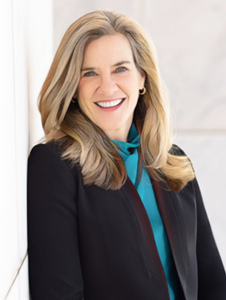Good news on the religious freedom frontlines
We should respect and celebrate our differences, and new federal guidance on prayer and religious expression in public schools will help schools do that while avoiding unnecessary conflict.

“Our goal is to provide clarity and reaffirm our students’ freedom of religion,” U.S. Secretary of Education Miguel Cardona said in a video address introducing updated federal guidance on prayer and religious expression in public schools. “Educators and school leaders should continue fostering inclusive environments and making accommodations for students from all religious and nonreligious backgrounds.”
From BJC’s perspective, it was good news that can move conversations from a football coach prayer controversy to religious freedom consensus in education and extracurricular opportunities. We can all cheer about that! The guidance builds on decades of agreement about how the Constitution protects the religious liberty of public school students and teachers.
BJC has long been a leader in promoting religious liberty in our nation’s public schools. Two things drive our efforts. First, public schools educate the vast majority of students in America — students that reflect the religious diversity of our nation’s population. Public schools are where many of us first met friends from different religions and learned to value Americans of other faiths as equal citizens. Second, public schools provide a useful context for understanding the way the religion clauses work together. Public schools are government entities constitutionally bound to avoid any establishment of religion, while protecting the free exercise rights of the students they serve and teachers they employ.
The U.S. Department of Education’s practice of providing guidance to public schools, along with a requirement that local educational agencies must certify their compliance, helps reduce conflicts over religion. BJC supports these efforts, including the Biden administration’s decision to update the guidance after the U.S. Supreme Court’s 6-3 decision in Kennedy v. Bremerton — the football coach prayer case.
The Kennedy decision continued the Court majority’s shift in religion cases away from principles that have protected against government-sponsored religion. The Court abandoned a long-standing test for deciding what constitutes a government establishment of religion, leaving a fair amount of confusion in its wake. The good news, however, was that the Court’s ruling in favor of the coach was based on selective facts that do not change expectations that teachers cannot coerce students into religious exercises. The coach’s success in the case hinged on his praying alone when his players were otherwise engaged.
We knew the coach’s “win” may be misused by some who would prefer government-sponsored religion — because the facts were convoluted and the plaintiff claimed to be a victim of anti-religious persecution. But a close reading of the decision is in line with long-prevailing standards that the Court maintained and the administration has now clarified. The guidelines make clear: “Teachers, school administrators and other school employees may not encourage or discourage private prayer or other religious activity.” There are times that school employees are free to engage in their own private religious observance. They cannot, however, “compel, coerce, persuade, or encourage” students to join them.
Students may engage in religious expression during instructional time to the same extent that other nonreligious private expression is allowed. The guidelines spell this out. The rule is similar when it comes to the distribution of literature, use of school property and student dress codes.
The guidelines don’t indicate sweeping changes. The decision in Kennedy v. Bremerton did not upend the long-standing consensus on prayer in public schools. But the guidelines offer every school district the opportunity to examine their policies and uphold important religious liberty standards.
It’s clear that the Biden administration understands the vital role that public schools play in ensuring faith freedom for all students. While occasionally hard questions arise, most debates over legal and constitutional protections for religious expression in public schools have been settled for a long time. The new guidance is in line with that from prior administrations from both parties, going back to the Clinton years.
Students should be free to express their religious beliefs by praying, wearing religious clothing and accessories, and discussing their faith with their peers. Religious groups should be free to meet on school grounds, and educators should teach about religion as an academic subject. Religious liberty in public schools is safeguarded by forbidding teachers and other government employees from leading students in religious exercises while on duty or otherwise coercing students in matters of religion.
I agree with Secretary Cardona’s statement that religious liberty is “one of America’s super powers.” We should respect and celebrate our differences, and this guidance will help public schools do that while avoiding unnecessary conflict.
Holly Hollman is general counsel and associate executive director of BJC.
This article first appeared in the summer 2023 edition of Report from the Capital. You can download it as a PDF or read a digital flip-through edition.




